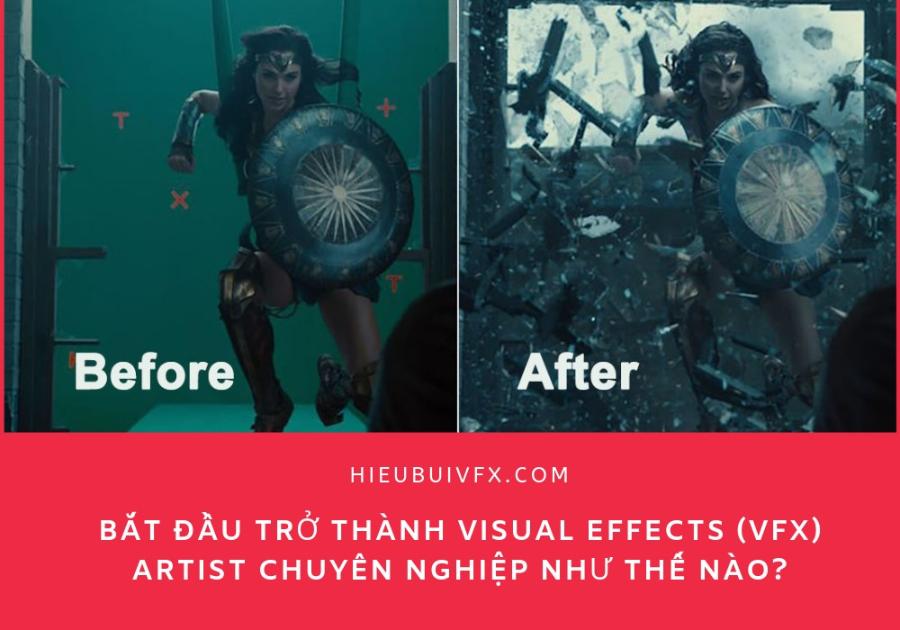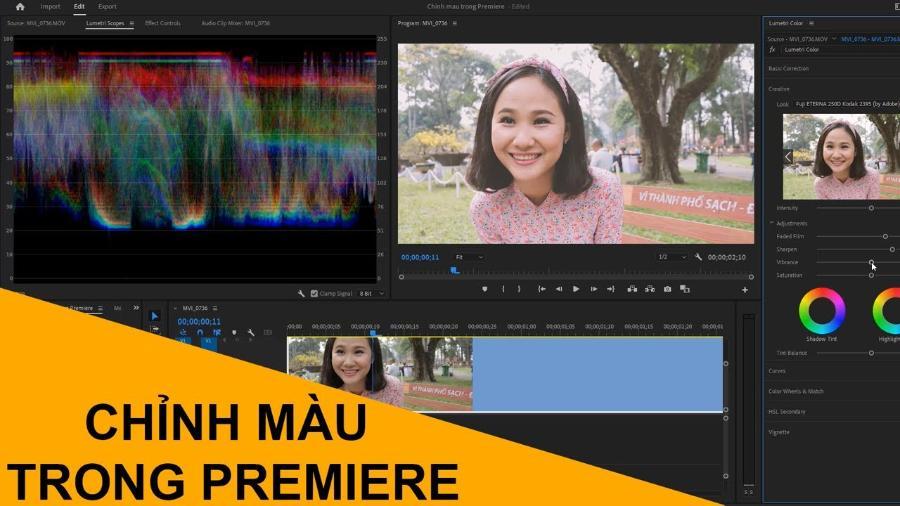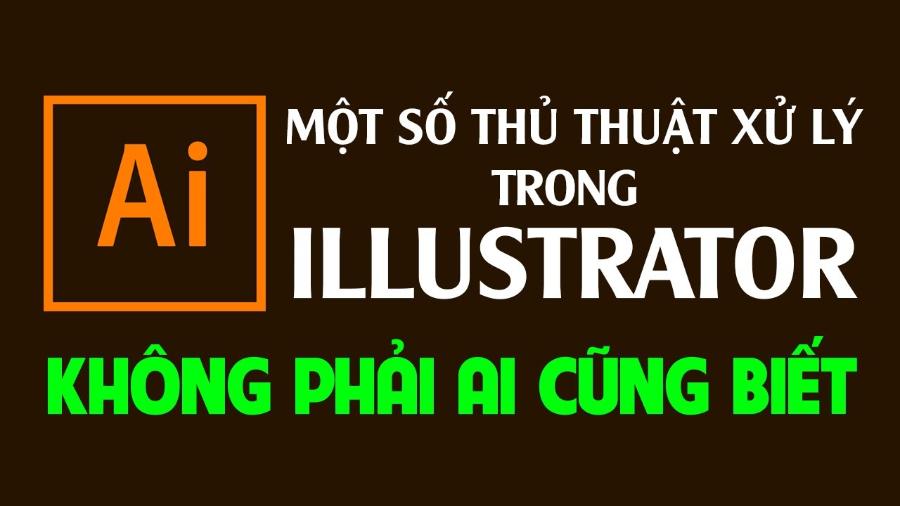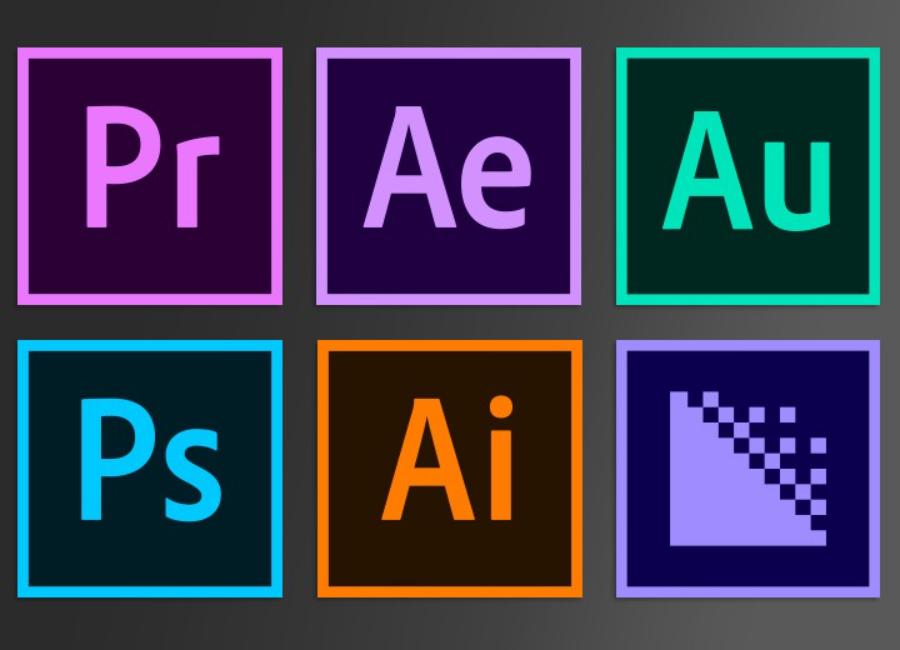Best Selling Products
The Complete Beginner's Guide to Becoming a Professional VFX Artist
Nội dung
Discover the essential steps to becoming a professional Visual Effects (VFX) Artist. A detailed guide to the skills, software, and steps needed to pursue a career in VFX.

Nowadays, the film and television industry is growing strongly thanks to the contribution of Visual Effects (VFX) Artists. The special visual effects in blockbuster movies or commercials always make a strong impression on viewers. However, the path to becoming a professional VFX Artist is not easy, requiring perseverance, constant learning and practice. This article will provide you with an overview of the basic steps to start a career in this field.
1. What is VFX? Basic Concepts of Visual Effects
Visual Effects (VFX) is a term used to describe techniques used to create special images in films, videos, or other media products. These images can be virtual elements that cannot be achieved with conventional filming techniques, such as epic action scenes, mystical creatures, or space scenes.
.jpg)
VFX involves not only creating digital images, but also elements such as lighting, color, motion, and other special effects. VFX Artists use specialized software to edit and create these effects so that they fit the project requirements.
This is an important field in the film, advertising and video game industries, helping to realize creative ideas that go beyond the limits of reality. With the continuous development of technology, VFX is becoming more and more sophisticated and realistic, contributing to enhancing the visual and emotional experience for the audience.
2. Necessary Skills of a Professional VFX Artist
To become a professional VFX Artist, you need to master special skills and tools. Here are some basic skills that a VFX Artist needs to have:
Artistic skills : This is the most important foundation, including the ability to feel color, light, composition and proportion. A VFX Artist needs to have an aesthetic eye to create effects that are realistic and in harmony with the scene.
Knowledge of VFX software : Tools such as Adobe After Effects, Autodesk Maya, Houdini, Nuke, Cinema 4D or Blender are popular software used in the VFX industry. Proficiency in these tools is a must for you to be able to create impressive effects.
3D Modeling and Animation Skills : Understanding the process of 3D modeling and programming the motion of virtual objects is an important skill in VFX. You need to know how to combine 3D models and real-world elements to create a finished product. Creativity and aesthetic thinking also play an important role in realizing unique ideas.
Understanding physics and light : VFX Artists need to understand how light and physical phenomena work to be able to recreate effects like explosions, fire, rain, snow or water. This helps create more realistic effects.
Communication and Teamwork Skills : VFX projects often involve different departments such as directors, editors, and other creative team members. Good communication and teamwork skills are essential to ensure effective work.
.jpg)
Ultimately, a spirit of continuous learning and keeping up with new technology trends will help VFX Artists maintain a competitive edge in the ever-changing environment of the entertainment industry.
3. First Step: Learn the Tools and Software
The first step to becoming a VFX Artist is to familiarize yourself with the necessary software and tools. Depending on the job requirements, you can choose the appropriate software to learn. Some popular software in the VFX industry that you can start learning include:
Adobe After Effects : This is an easy-to-learn software that is very popular in the VFX industry. It is suitable for simple 2D and 3D effects. After mastering After Effects, you will have a foundation to learn more complex software. This software has become an indispensable tool for designers, filmmakers, and content creators. Adobe After Effects offers a wide range of advanced features, from creating animated titles, lighting effects, to integrating with other software in the Adobe ecosystem, helping to optimize workflow and improve the quality of the final product.
Autodesk Maya : This software is widely used in the film industry, especially for 3D modeling, animation and special effects. It is an ideal solution for designers, digital artists and professionals in the entertainment industry, helping to realize creative ideas efficiently and professionally.
(1).jpg)
Nuke : Known as a powerful compositing software, Nuke helps you combine footage, correct color, and incorporate 3D elements into real-world footage. With its powerful compositing capabilities, Nuke allows filmmakers, visual effects artists, and creative professionals to perform complex operations such as compositing, editing visual effects, and creating high-quality products. The software features a flexible interface, supports node-based workflows, and optimizes performance and customization. Thanks to its advanced features and extensibility, Nuke has become an indispensable tool for film, advertising, and digital media projects that require high precision and quality.
Houdini : This software is especially powerful in creating dynamic effects such as liquids, smoke, explosions, and other complex simulations. It stands out for its node-based system, which makes it easy to manage and edit projects, and offers many advanced tools for simulating natural effects such as smoke, fire, water, and destruction. Thanks to its flexibility and powerful features, Houdini has become an indispensable tool for filmmakers, designers, and other professionals in the creative industry.
Blender : This is a free yet powerful software for 3D modeling, video editing and special effects. Blender is also a great tool for beginners as it requires no initial investment.
4. Understanding the Working Process of a VFX Artist
.jpg)
The work process of a VFX Artist is a combination of artistic creativity and high-tech techniques, requiring meticulousness and extensive expertise. Starting with studying the script, they need to clearly understand the project requirements and visualize the visual effects needed to enhance the visual experience. Then, the VFX Artist uses specialized software such as Maya, Houdini, or Nuke to design and create effects, from physical simulation, lighting, to complex elements such as smoke, fire or water. Once you are familiar with the tools, the next step is to learn the workflow of a professional VFX Artist. A VFX project is usually carried out through the following stages:
Pre-production : This stage involves creating concept drawings, designing shots and planning the effects that will be used. VFX Artists will have to work with producers and directors to understand the requirements and create appropriate effects.
Production : During this stage, the actual shooting will take place. VFX Artists will be involved in the shooting process, and will ensure that the VFX elements are properly implemented. This may include green screen shots or other shooting techniques.
Post-production : This is the most important stage in the VFX process. VFX artists will start creating effects, editing the footage, creating 3D models and incorporating virtual elements into the footage. This step also includes editing lighting, color and other elements to complete the product.
5. Build an Impressive Portfolio
To attract the attention of employers or clients, a VFX Artist needs to have an impressive portfolio. This is where you showcase your work, from personal projects to projects you have participated in. A good portfolio should clearly demonstrate your skills and style.
.jpg)
Choose your best work : Only include work that you are truly proud of. Each project should be varied so that you can demonstrate your ability in a variety of areas.
Show your workflow : Employers often appreciate VFX Artists who can explain their workflow. You can share the steps of a project, from idea to completion.
Keep your portfolio updated : The VFX industry is always changing and evolving. Therefore, you need to update your portfolio regularly to ensure that it always reflects the latest skills and tools.
6. Join the Community and Learn Continuously
The VFX industry is a very competitive field, so it is important to join online communities, forums and knowledge exchange groups. You can learn from experienced VFX Artists, get advice and build relationships in the industry.
Additionally, attending courses, workshops and industry events will help you stay up to date with the latest trends and improve your skills.
7. Conclusion
Becoming a professional VFX Artist is not an easy process, but if you are persistent and passionate, you will be able to conquer this industry. Starting from learning the tools, building a portfolio and joining the VFX community, you will gradually develop and become an expert in this field. Always remember that learning and creativity are the keys to long-term success in the VFX industry.












































